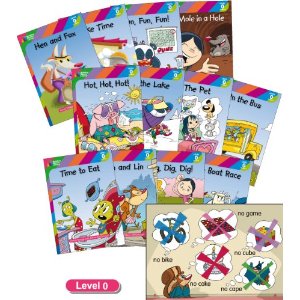curriculum Dolphin Readers EFL eikaiwa ES expectations extensive reading graded readers kids language courses materials oxford owl oxford phonics world Oxford Reading Tree phonics presentations school management video
by sendaiben
leave a comment
VIDEO Oxford Teaching Workshop Series 2013: Creating a Reading Program for Young Learners
This year I was very fortunate to be invited to be part of the Oxford Teaching Workshop Series, presenting in four cities in Japan this spring. This video is from the Okayama session:
Please tell me about your reading program in the comments.
conference curriculum EFL eikaiwa elllo ES ETJ expectations extensive listening extensive reading high school Japanese junior high school Language learning online resources oxford owl Oxford Reading Tree phonics popjisyo presentations renshuu reviews rikai self-study teaching technology TED university video
by sendaiben
leave a comment
Annotated list of websites from the “SRS, RSS, LMS: Online Tools to Boost Learner Efficiency” presentations
Hi everyone
A friend from Sendai reminded me that I promised to post the list of websites from my presentation on the blog. Here it is:
Anki is a spaced-repetition program
elllo.org is an amazing listening resource: over 1200 short conversations with transcripts
EnglishCentral.com has short videos with interactive subtitles as well as vocab and pronunciation practice
Facebook needs no introduction
Google search settings have some interesting tools, like reading level
Google translate is partially useful
iTunesUniversity great content for advanced students and teachers can now use it to show their classes
Network (Oxford University Press textbook) new series based around social media
OxfordOwl incredible resources including Oxford Reading Tree ebooks with sound
pikifriends a closed social network for junior high schools
popjisyo.com amazing resource for reading online content
readthekanji.com a simple (paid) system for learning kanji
renshuu.org a very powerful site for learning kanji and vocabulary -freemium but most of it is free
rikaikun for Chrome/rikaichan browser extension Firefox gives popup translations within the browser
skype for video calls
starfall.com phonics and reading practice for children
TED.com great content for teachers and advanced learners
youtube.com you know this
Hope you find something useful in there.
Building Blocks Library curriculum EFL eikaiwa ES extensive reading junior high school kids Language learning materials phonics readers Reading Review reviews teaching
by sendaiben
5 comments
Review of MPI’s Building Blocks Library
Full disclosure: I was asked to write some additional readers for this series last year, and they just came out. I’ll try not to be too gushy in this review.
The Building Blocks Library, published by Matsuka Phonics Institute, is a ten level series with 82 titles. The first four levels are written as phonics readers to help students start reading, the ones after that are leveled readers for extensive reading.
The good:
- The same characters appear in many of the books, developing throughout the levels
- Ten levels means that students can move up through the series gradually and read at their level
- The artwork and production values are high and the books are attractive
- Each level comes with a CD of the books read aloud: the CD is well made and the voice acting is good
- Most of the books are interesting with varied story lines
- The series is reasonably priced, especially considering they come with CDs
The bad:
- There are not enough books at each level to meet student needs (this has been partially addressed with the new Level 0 and Level 1A sets, but schools will still need to supplement this with other materials)
- The difficulty outstrips the content at the higher levels, ie they are difficult for ordinary junior high school students to read even though the stories probably appeal to students that age the most
Overall:
This is a very nicely produced series that appeals to students and is economical and easy to integrate for schools. The main drawback is that there are not enough books at each level to allow students to move up the levels smoothly -ideally students would be doing much more reading at each level before moving up so teachers will have to supplement this with other materials.
curriculum EFL ES extensive reading kids phonics readers Reading reviews school management teaching
by sendaiben
2 comments
Now I’m Reading phonics readers
Now I’m Reading is a phonics program consisting of five levels of books, from pre-reading to independent. The books come in packs of 10 in a durable and attractive binder. Books can be read as a set or taken out to be read individually. The official website contains lots of information about the series, as well as downloadable activities.
Like Bob Books, this is also a great value option. One set is just over 1300 yen from Amazon.jp, making individual books cost about 130 yen. The production values are better than Bob Books: the binders are excellent and the books are printed in colour on thicker paper. The illustrations are also very attractive.
My take on the books:
1. the books are attractive and appealing to students (I like them too)
2. the pre-reader level (pictured above) makes great mini-story books to read aloud in class (it is not phonically graded)
3. the phonics levels are well-structured, but the stories suffer somewhat from phonics-itis (where the story comes second to the phonics target, resulting in awkward or boring stories)
4. great value
5. easy for students to read individually in class or take home for homework
On the whole, I am quite a fan. While they are not as good as Jelly and Bean (mainly because of how the phonics stories are constructed), they are much cheaper and clearly better than similar products in the same price range. If nothing else I really recommend the pre-reader level as really cheap story books.
Has anyone else used Now I’m Reading?
curriculum EFL eikaiwa ES extensive reading kids language courses phonics readers Reading reviews teaching
by sendaiben
leave a comment
Bob Books children’s phonics readers
Bob Books are a great low-cost option for schools that want to start phonics practice with students but don’t have the funds available for more extensive purchases.
The newest version consists of five sets (each containing twelve books), which are available from Amazon.co.jp for just over 1200 yen. As this works out at just over 100 yen per book, they are excellent value for money. There are also older versions that contain similar books in slightly different configurations with different names.
We bought our Bob’s Books quite a few years ago, and used them until we found Follifoot Farm. We haven’t really used them since.
My thoughts on the series:
1. the phonics progression is handled quite well, and they are decodable
2. the language used in the books is not graded, making them somewhat challenging for EFL students at times
3. they feel quite cheap, being printed on thinner paper in black and white
4. the pictures are simple line drawings
5. I feel the stories are not particularly inspired, and many of them are driven solely by the phonics rather than the story itself
In short, these are a cheap and relatively effective option. They are certainly better than nothing, but they are not in the same league as Follifoot Farm. If you can’t afford anything else, they will at least get your students reading.
Anyone else use Bob Books?



